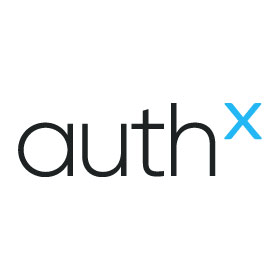Notifications

6 minutes, 19 seconds
-346 Views 0 Comments 0 Likes 0 Reviews

The Benefits of Identity Management and Identity Providers
In today’s increasingly digital world, identity management and identity providers (IdPs) have become critical components for ensuring secure access to systems, applications, and data. As organizations expand and technology continues to evolve, there are huge benefits of identity management has become a foundational aspect of security, offering a range of benefits for both businesses and users.
What is Identity Management?
Identity management (IDM) refers to the policies, processes, and technologies used to manage and secure the identification of users and devices across digital systems. It encompasses the creation, maintenance, and deletion of user identities, as well as their authentication and authorization to access various resources. IDM systems ensure that only authorized individuals or devices can access specific services or data, providing both security and convenience.
What is an Identity Provider (IdP)?
An Identity Provider (IdP) is a service that manages digital identities and provides authentication services. An IdP verifies the identity of users and systems, issuing credentials such as usernames and passwords, or more secure options like multi-factor authentication (MFA). Once users authenticate their identity with the IdP, they can access various applications and services without having to log in separately to each one.
IdPs are commonly used in Single Signon (SSO) environments, where a user can authenticate once and gain access to multiple systems or applications. Common examples of IdPs include services like Google, Microsoft Azure Active Directory, and Okta.
Key Benefits of Identity Management and Identity Providers
The most significant benefit of identity management is improved security. IDM systems ensure that only authorized users gain access to sensitive data and systems. By using strong authentication methods, such as multi-factor authentication (MFA), organizations can significantly reduce the risk of unauthorized access, data breaches, and identity theft.
An identity provider, particularly in SSO systems, enhances security by centralizing the authentication process. By reducing the number of passwords users need to remember and manage, the risk of weak password practices or password fatigue is mitigated. Centralized authentication also allows for easier monitoring of user access and activity, which is essential for detecting and preventing security threats.
One of the primary advantages of identity management is the improved user experience. With SSO and identity federation, users only need to authenticate once to gain access to multiple systems or applications. This reduces the need for remembering multiple passwords and credentials, making it easier and faster for users to navigate their digital environment.
For organizations, a simplified user experience means less time spent on password resets and other support tasks. Employees can focus on their work instead of being burdened with frequent authentication requirements.
Identity management systems streamline user provisioning, access control, and user deactivation. By automating these processes, organizations can reduce manual intervention and administrative overhead. For example, when an employee joins or leaves an organization, their access can be easily managed and adjusted through the IDM system.
Centralized identity management also helps businesses to comply with regulations and policies by ensuring that user access is monitored and controlled. This reduces the risk of errors and ensures that the right level of access is granted to the right individuals.
In many industries, regulatory frameworks require businesses to adhere to strict guidelines regarding data protection, privacy, and user access. Identity management helps businesses comply with these regulations by providing visibility into who has access to what data and ensuring proper access controls are in place.
Using identity providers with advanced security features like MFA and encryption further supports compliance with laws such as the General Data Protection Regulation (GDPR) and the Health Insurance Portability and Accountability Act (HIPAA).
As organizations grow, identity management systems can scale to accommodate an increasing number of users, devices, and applications. Many IdPs are cloud-based, offering flexible, scalable solutions that can adapt to evolving business needs. Whether an organization is onboarding new employees, integrating new applications, or expanding its network, IDM systems can be adjusted to provide consistent and secure access.
Conclusion
Identity management and identity providers are essential components for securing digital environments in today’s interconnected world. With their ability to enhance security, simplify user experiences, reduce administrative costs, ensure compliance, and scale with growing businesses, they provide a wide range of benefits for organizations of all sizes. As cyber threats evolve, investing in robust identity management systems and working with reliable identity providers is increasingly necessary to safeguard sensitive data and maintain trust with customers and employees.

